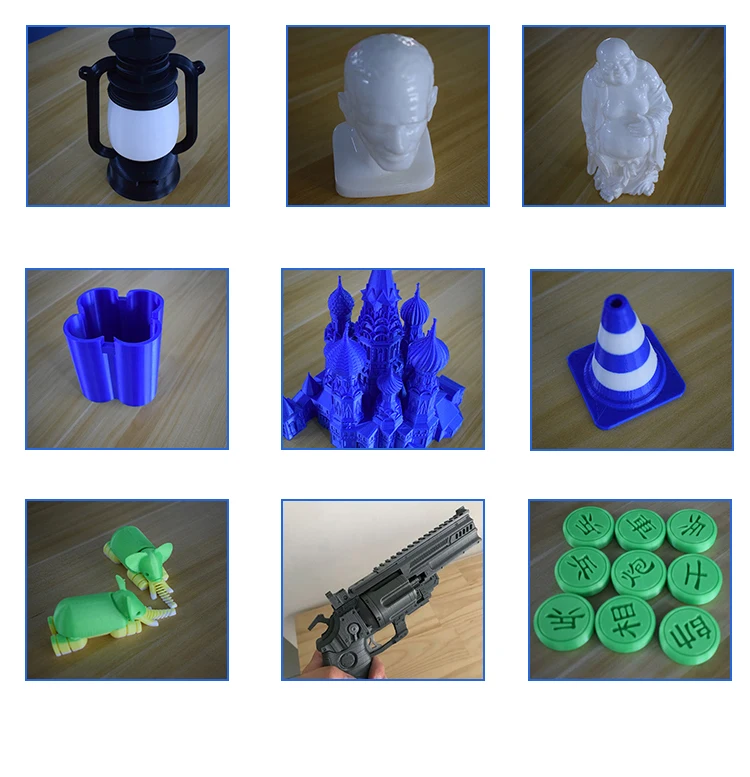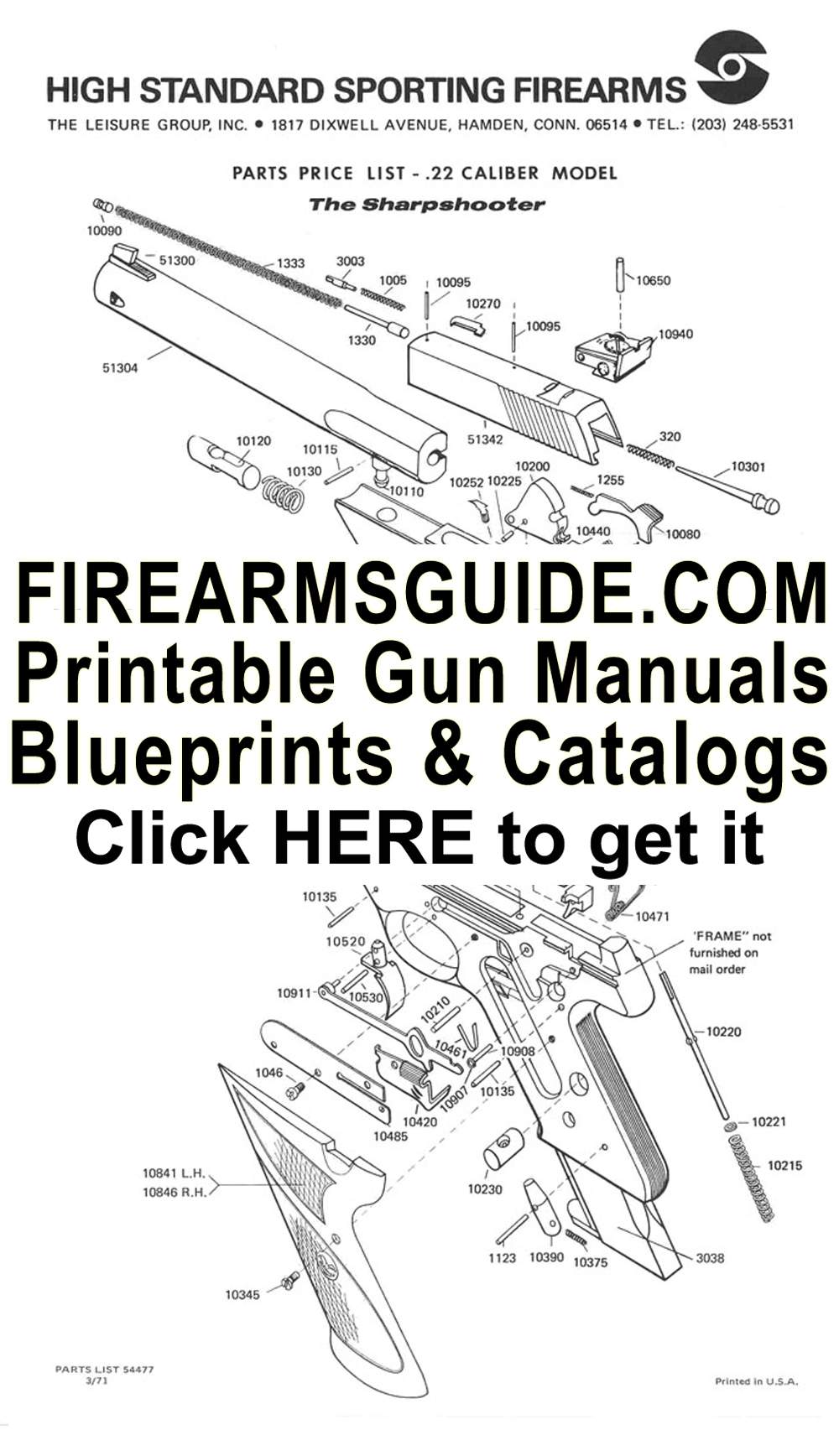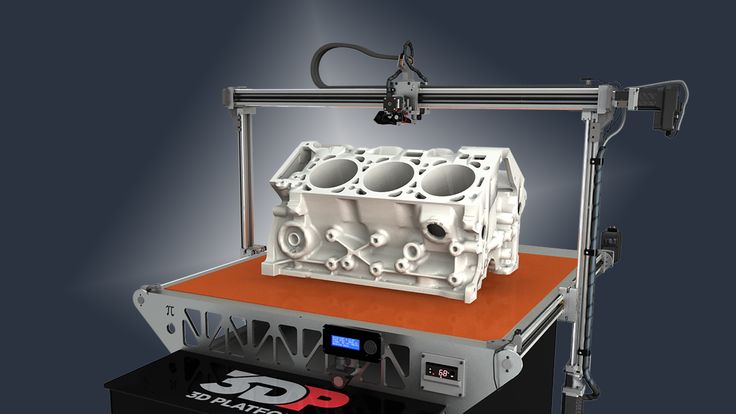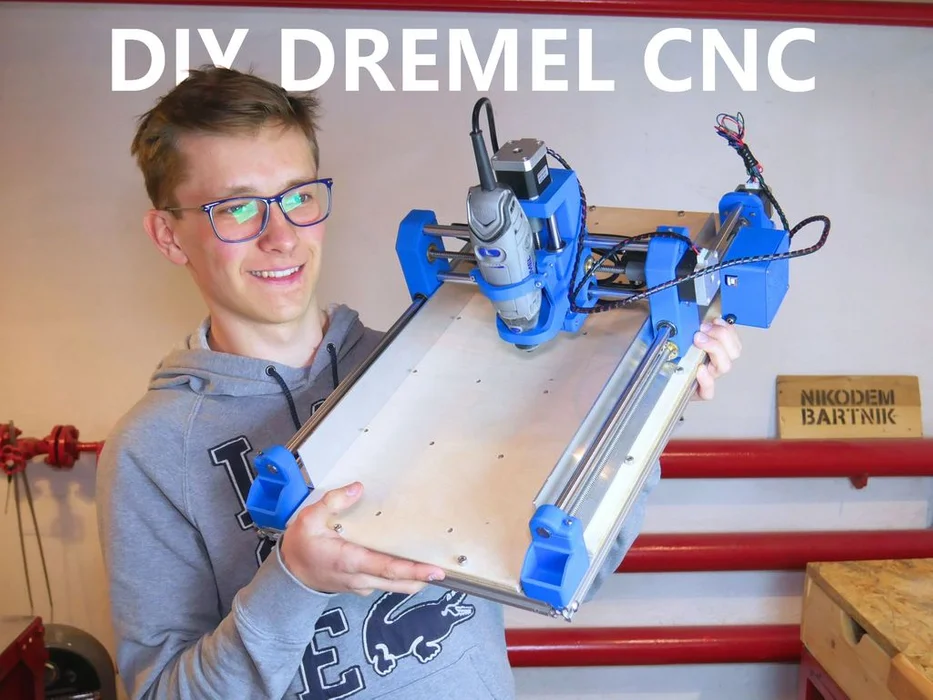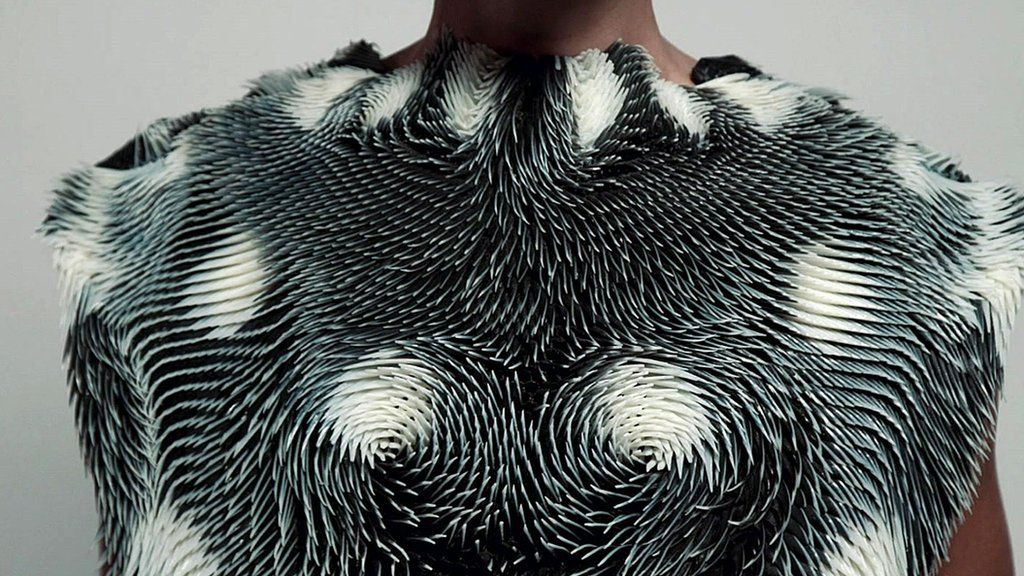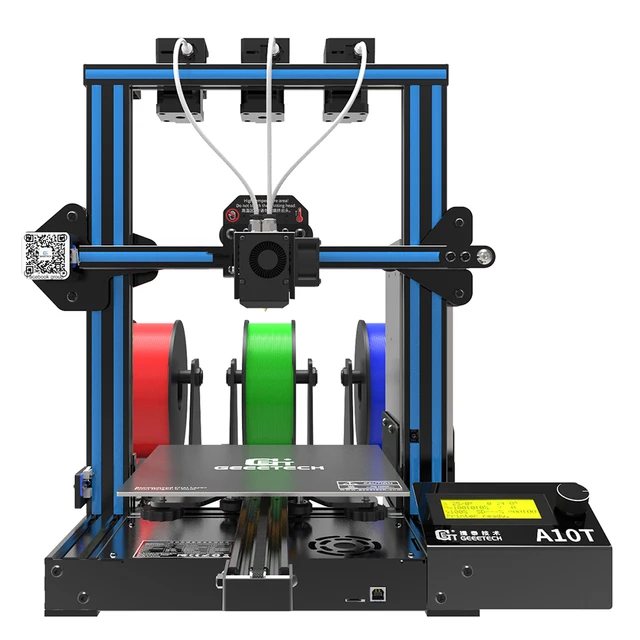Monoprice maker select 3d printer v2 review
Monoprice Maker Select V2 Review
The Maker Select V2 by Monoprice is a bare-bones, simple printer that did average to slightly above average across the board. It would be a good entry point for someone who doesn't want to shell out a bunch of cash and isn't afraid to tinker or troubleshoot a bit.
The Monoprice Maker Select V2 is an alright printer and a good value, making it something to consider for an introductory model.
Credit: Jenna Ammerman
Performance Comparison
To test these products, we conducted over 45 different tests and ranked their performance side-by-side. Our testing plan consisted of four weighted metrics — Print Quality, Ease of Use, Print Capabilities, and Support — with the following sections detailing how the Maker Select V2 stacked up against the rest of the printers in the test.
The collection of models printed by the Monoprice.
Credit: Jenna Ammerman
Print Quality
This metric accounted for the largest portion of the final score, accounting for 40% of the total. We printed a set of test models, in both ABS and PLA, and had a panel of novice and experienced 3D printer users rate the appearance of the sample prints. The panel did not know which printer had produced each set of prints, eliminating any bias or preconceived notions. The Maker Select V2 did an acceptable job, meriting a 5 out of 10.
The Maker Select did a subpar job at our first test print, the 3D Benchy tugboat, in both PLA and ABS. The ABS version had layers separating and a poor surface finish. The PLA version was superior to the ABS but still had some noticeable wobble in the Z-Axis and the layers were less smooth.
The tugboats made by this printer didn't impress us all that much.
Credit: Jenna Ammerman
This model also didn't excel at printing our bridging test or the Eiffel Tower. The Printer did about average in the PLA versions, with only some minimal sagging in the longest bridges and an alright Eiffel Tower. However, both ABS versions of this test print failed to complete.
The ABS versions of these complex prints were complete failures.
Credit: Jenna Ammerman
Moving on to our next three test prints, the Monoprice Maker Select didn't too much in boosting its score. While it did do quite well on our overhang test, both in PLA and ABS, printing up to the 70° mark, the underside wasn't quite as smooth as the Lulzbot or the QIDI. The articulated elephant turned out terrible in ABS, with a ton of layer separation. The PLA version was acceptable, with joints that moved alright but having a body that overall looked a little rough. The nickel test turned out to be slightly oversized, with the nickel falling through easily and the ABS version warped slightly, costing it a few points.
The ABS version of the elephant was splitting apart due to the layers warping and separating.
Credit: Jenna Ammerman
The next two prints — the platform jack and the hollow cube — were two of the more difficult prints in our test. Once again, the Maker Select didn't impress, doing a relatively subpar job. The PLA platform jack was acceptable — opening and closing, but having plenty of Z-Axis wobble and shoddy bridging. The ABS version failed to print entirely. The ABS hollow cube had some layer separation, while the PLA version also had plenty of Z-Axis wobble.
Once again, the Maker Select didn't impress, doing a relatively subpar job. The PLA platform jack was acceptable — opening and closing, but having plenty of Z-Axis wobble and shoddy bridging. The ABS version failed to print entirely. The ABS hollow cube had some layer separation, while the PLA version also had plenty of Z-Axis wobble.
The platform jack didn't look great but it did open and close.
Credit: Jenna Ammerman
The Monoprice did a mediocre job at our pair of low-poly figurines. One ABS version failed to print, while the successful prints had sloppy overhanging sections and some layer separation.
The overhangs on the low-poly figures could have been a little cleaner.
Credit: Jenna Ammerman
Continuing the trend, the Maker Select delivered a similar performance in our tall tower test and spiral vase but did surprise us slightly by its stellar performance in the support test — at least in PLA. Both ABS and PLA spiral vases had some thin spots and layer separation. The tall towers were both slightly subpar, with two sides exhibiting noticeable undulations. The PLA support test did score above average, with the sacrificial structure breaking away easily and leaving behind a clean surface. The ABS version failed to print.
The tall towers were both slightly subpar, with two sides exhibiting noticeable undulations. The PLA support test did score above average, with the sacrificial structure breaking away easily and leaving behind a clean surface. The ABS version failed to print.
You could clearly feel the waves in the towers as you moved up the vertical axis.
Credit: Jenna Ammerman
The Maker Select delivered a reasonable showing in the last two tests, a threaded jar and lid.
The threaded containers that printed were about average.
Credit: Jenna Ammerman
The PLA version of the jar had alright threads and was reasonably smooth, though the ABS version failed to print. The lids were pretty good, though not as high resolution as the FlashForge and the ABS version had a little warping.
The Monoprice required a little bit of assembly.
Credit: Jenna Ammerman
Ease of Use
The next metric in our review --Ease of Use — accounted for 30% of the total score. We compared the difficulty at initially setting up and unboxing the printer, changing filament, leveling the print bed, and connecting to the printer, as well as what sort of display the printer had. The Maker Select once again earned a 5 out of 10 for its overall average performance.
We compared the difficulty at initially setting up and unboxing the printer, changing filament, leveling the print bed, and connecting to the printer, as well as what sort of display the printer had. The Maker Select once again earned a 5 out of 10 for its overall average performance.
Unboxing the Maker Select V2.
Credit: Jenna Ammerman
The initial setup was about average compared with other models. After unboxing, you only need to attach the base, connect the wires, and attach the spool holder. However, this was a little more difficult as the spool holder attached with fasteners, rather than snapping or sliding into place. We did find that the connector for the extruder cooling fan had worked loose in shipping, causing our first print to fail, but was easily remedied by re-attaching the connector.
We found the manual leveling system to be a pain and this was one of our least favorite machines to level. We also found it easy to inadvertently hit the thumbscrews and change the bed level accidentally.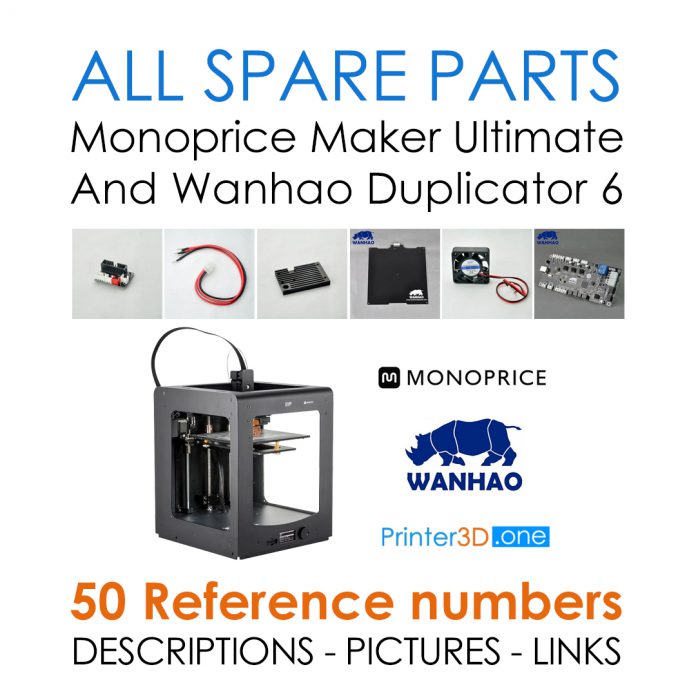
It was about average to swap filaments and this printer used Cura as a slicer, which we found to be one of the better software programs.
Like many others, this model uses Cura as the recommended slicer.
Credit: Jenna Ammerman
This printer has an LCD display on it power supply box that shows current printing progress while it is operating.
The display is built into the power supply for this model.
Credit: Jenna Ammerman
This box also has a microSD card slot to allow for standalone printing and the USB connector for when the machine is tethered to a computer.
The Maker Select is a reasonably capable printer.
Credit: Jenna Ammerman
Print Capabilities
Boosting its overall score, the Monoprice Maker Select V2 performed above average in this metric, earning it a 6 out of 10. We compared the build volume and build plate, the filament capabilities, cooling setup, as well as the slicing software between models to determine scores.
The Monoprice uses Cura as a recommended slicer, with the option to upgrade to a more sophisticated program, such as Simplify3D.
This printer had a decently large build volume of 200 x 200 x 175mm, putting it in the middle of the pack. The print surface itself is slightly subpar, with a stick-on print bed attached to an aluminum plate. This print surface proved to be a little problematic, giving us a handful of bed adhesion issues.
We had multiple ABS prints detach from the print bed partway through, even when using adhesive and a raft to secure them.
Credit: Jenna Ammerman
The Maker Select is compatible with generic, 1.75mm filament. The extruder can hit a maximum temperature of 260°C. This wasn't exceptionally high but does allow this model to print ABS, PLA, PET, PVA, or HIPS — just none of the higher temperature filaments like Nylon. This model also has one layer cooling fan.
Support
Our fourth and final metric — Support — made up the residual 10% of the overall score.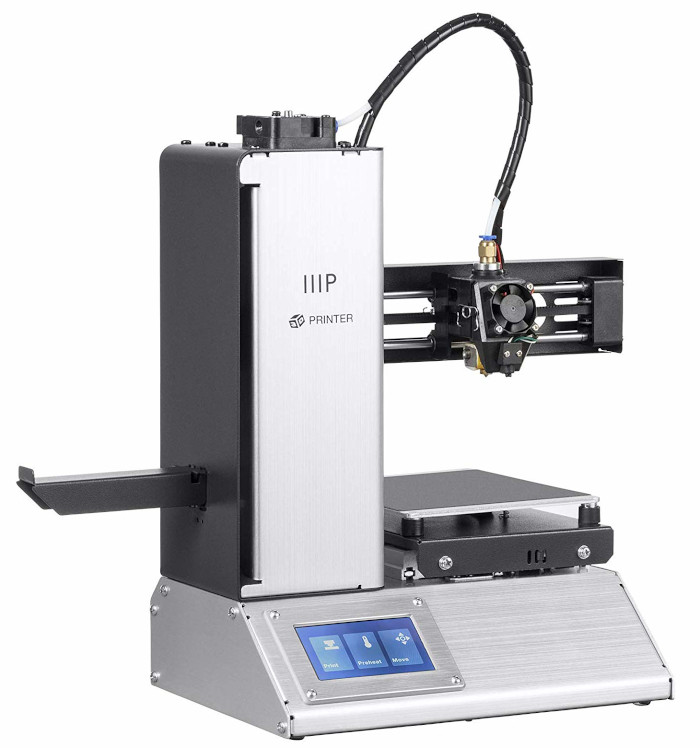 This was determined by the helpfulness of the customer support team and the ease at contacting them, as well as the quality of instructional videos on the manufacturer's site and the warranty included with the printer. The Monoprice Maker Select V2 did a good job, earning a 6 out of 10.
This was determined by the helpfulness of the customer support team and the ease at contacting them, as well as the quality of instructional videos on the manufacturer's site and the warranty included with the printer. The Monoprice Maker Select V2 did a good job, earning a 6 out of 10.
You can contact the support team via email, contact form, phone, or instant messenger. However, We didn't find the team to be that helpful, basically telling us that we needed to return the printer to fix what seemed to be a simple issue with print quality.
The printer does include a 1-year warranty — better than most. However, there wasn't a ton of helpful instructional videos on their website, losing it a few points.
Value
This printer is one of the most budget-friendly but it isn't necessarily a great value. Its low retail price is accompanied by an overall mediocre performance.
Conclusion
The Monoprice Maker Select V2 is a low-cost, budget-friendly model that had an impressively mediocre performance. This might be a good option for those diving into 3D printing and are unafraid of tinkering and troubleshooting, with a good probability of more difficult prints failing or requiring a few attempts to complete.
This might be a good option for those diving into 3D printing and are unafraid of tinkering and troubleshooting, with a good probability of more difficult prints failing or requiring a few attempts to complete.
Monoprice Maker Select V2 3D Printer In-Depth Review
6.8Expert Score
Monoprice Maker Select V2
Monoprice Maker Select V2 has a big build volume, an aluminum heating bed, and a lot more.This printer can print using various materials. It is based on open-source software that runs on the industry-standard G code.
Affordability
9
Quality
6
Speed
6
Capability
8
Practicality
5
User Expectations
7
PROS
- Monoprice Maker Select V2 is affordable.
- The print quality is average.
- This printer offers a large build area.
- Has a support team that is ready to help anytime i.
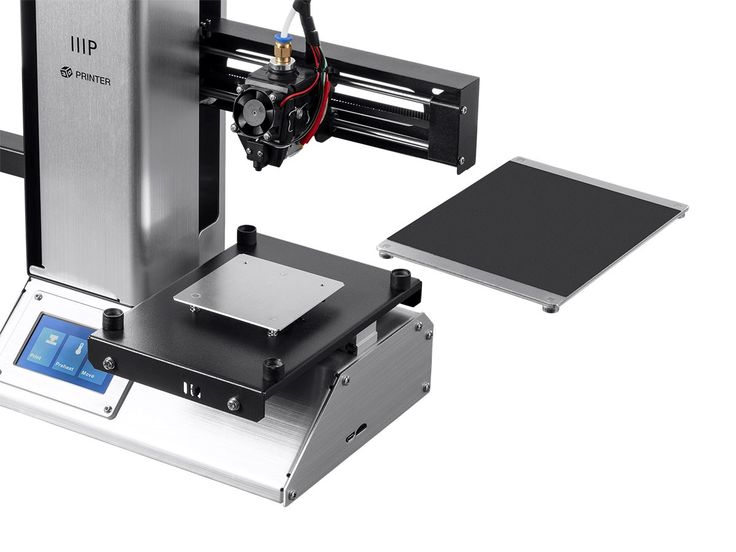 e. before or after purchasing the printer.
e. before or after purchasing the printer.
CONS
- Support structures used with this printer could be better than what they are.
- Setting the printer up requires a little more time than with other printers.
Here is a 3D printer that is suited for newcomers as well as experienced and professionals in the field of 3D printing. Monoprice Maker Select V2 ...
Add to wishlistAdded to wishlistRemoved from wishlist 0
Add to compare
|
Table of Contents
Newcomers can categorize Monoprice Maker Select V2 in that category of printer’s which they can afford to buy even if they are not looking at 3D printing for the long term.
Experienced and Professionals in this field will want to purchase this printer when they are not willing to produce a work that needs dimensional accuracy and can afford the visibility of layers on the parts and functional prototypes that the printer produces.
Packed with a considerable list of features, supporting a wide range of materials, and having a big build volume, Monoprice Maker Select V2 is an easy to use, user-friendly 3D printer.
For those who haven’t done much research in the field of 3D printers, chances are that you’d find the price of this printer disguising. Because this is a printer that gives good performance while making small items and an average performance while making complex parts that have intricate detailing.
If you have seen Duplicator i3, you’d recall its looks because the appearance of Monoprice Maker Select V2 is such. The only major difference between both is the location of the spool holder. The former contains it on the top of its frame, while the latter contains it on the control box.
Below mentioned is a list of some of the features that are rare, amazing and core to be found in a printer that falls in the same price range as Monoprice Maker Select V2 does.
Features
This printer can print using various materials. It is based on open-source software that runs on the industry-standard G code. Comparing this printer’s features with features of a printer in the same price range would let you know the exact difference between purchasing Monoprice and others.
Monoprice Maker Select V2 has a big build volume, an aluminum heating bed, and a lot more. Looking at the list below with the explanation would explain you in detail about its features.
Huge Print Volume and Aluminum Heating Bed
If you ask for advice to an expert on a 3D printer, before buying one, chances are high that the advice is on looking for a machine that promises big print volume.
Monoprice Maker Select V2 has a build volume that is rare to find in its competitors. A big print volume assures you to print parts that cannot be printed at one shot, otherwise.
A big print volume assures you to print parts that cannot be printed at one shot, otherwise.
So say if you wish to print a part or functional prototype and your printer does not offer the same print volume as Maker Select V2 does, you’d have to make a design of smaller parts, print them separately and find a way to assemble them.
The aluminum heat bed is one of the most essential features for today’s 3D printers because most of the materials demand to be cooled down at a certain pace.
The other thing that aluminum offers unlike other metals is that the printed part remains stuck to the build platform. This is important while printing objects of greater build volume without using support structures. And the third benefit while printing with the aluminum heating bed is, it helps in preventing warping at the edges of the print.
Open To Slicing Software And Materials
Monoprice has made sure that their printer is compatible with various slicing software by keeping it open-sourced and using the industry standard G codes.
You can use software such as Cura, Repetier Host, Replicator G, Simplify 3D, and any other software that uses the same G codes.
Most 3D printers that come in the same price range as Monoprice Maker Select V2 does, offers printing only with PLA. Isn’t it surprising and fabulous that this printer offers to print with PLA, ABS, PET, PVA, and HIPS?
Multiple Options To Connect And Ready To Print As Soon As Unboxed
The printer can be connected using a micro SD card and USB port. These are the two most standard options that are also considered stable connectivity options than those which have a risk of being prone to bugs and hacks.
To start printing with this printer, all you’ve got to do is secure the base with its frame and the two screws, attach them to the filament holder. That’s it! You can start printing.
Specifications
Credit: tobuya3dprinter.com
Monoprice Maker Select V2 has a decent build volume of 200 mm * 200 mm * 175 mm. The surface has an aluminum plate attached to itself and is present exactly in the middle of the printer.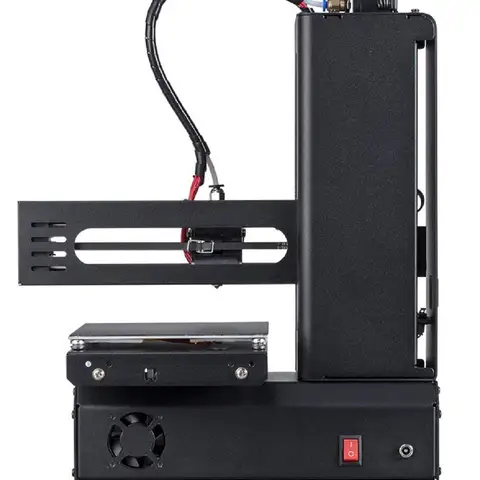 f
f
It is compatible with the industry-standard 1.75 mm filament. The printer’s extruder can bear a maximum temperature of 260 degrees Celsius. This makes the printer eligible to print with materials such as ABS, PLA, PET, PVA, HIPS, etc.
A layer cooling fan is used to cool the prints faster, once they are completely printed.
Monoprice Maker Select V2 is based on Fused Deposition Modeling, it has a print speed of 100 mm per second. The layer resolution offered by the printer is 100 microns.
Price
Unlike other printers, Maker Select V2 is available not just online, but also at distributors in the USA. The market price of the printer in most places is in the range of $300 to $500. On days it is also available below $300. On the manufacturer’s website, Maker Select V2 is priced at $259.99.
First impressions
Credit: techgearlab.com
Monoprice Maker Select V2 has an open structure, giving easy access to the printer. Compared to its predecessor, this model comes with a better quality of parts and stable build-up, which does not let the printer vibrate during the printing process.
The default extruder that the manufacturer of this printer offers, works well with this printer, although it has some problems while printing with advanced materials. The printer has its house in a sturdy aluminum frame and is accompanied by a separate control box.
The box transforms into a larger footprint so you would have to make sure that the table you plan to put this printer on, is big enough.
There is a bulky control box that has a knob-operated LCD interface displaying various statistics including the print progress and temperature of heating components.
The printer has an LCD on its power supply box, it shows current printing progress while the printer is in operation mode This 3D printer comes with a heated printing bed, enabling you to print with ABS and other high temperature melting materials.
The overall design of Maker Select V2 is unique, although not better than the competitors.
Setup
Credit: techgearlab.com
The first few minutes of setup was above average if compared with the printer’s other models. After unboxing Monoprice Select V2, you need to attach the base of the printer, connect the essential wires, and join the spool holder.
After unboxing Monoprice Select V2, you need to attach the base of the printer, connect the essential wires, and join the spool holder.
The last part was a little more difficult compared to other models because in this printer the spool holder needs to be joined using fasteners instead of snapping or sliding it.
There are reports of the connector with which the extruder cooling fan is connected, goes loose due to shipping. But then it causes some trouble with the first print and then when re-attached with the connector, it works just fine.
The printer has a manual leveling system which can be a pain as most of the printers come with an automatic leveling system. And the box also contains a micro SD card slot, allowing to standalone printing and the USB connector whenever the machine is tethered to the computer.
Printing Type/Cost
The operating cost of Maker Select V2 is lower than the industry standard, though depending on the material with which you wish to print.
Apart from the operating cost, the printing cost also depends on the intricacy of the parts and functional prototypes that are you are willing to print with this printer.
Summed up with the build volume and the layer by layer resolution required, because Maker Select V2 is based upon FDM technology. So the distance of the print bed from the nozzle would also account for the printing cost.
Having said that, reports on various websites which have tested this printer writes the printing cost to be average per print.
Although because this printer is more preferred by people looking to learn and experiment with the technology or professionals who have complete knowledge about it, the printing cost can be considered obvious.
Print Quality
Credit: collideabq.com
As reported on the websites, that test the printer by printing various parts and functional prototypes, the print quality of Monoprice is rated to be at an average level.
Printing with PLA and ABS, the layer separation is visible in both, although lesser in PLA than in ABS. The bridging test and the Eiffel tower test was done using this printer, also rates it to be an average print producing printer.
The bridging test and the Eiffel tower test was done using this printer, also rates it to be an average print producing printer.
The overhang test done with Monoprice Maker Select V2 will surprise you a little bit.
The PLA version of Elephant turns out to be extremely well in terms of not displaying layer separation. Overall the print quality of this printer falls a little short than Lulzbot Bot Mini, Qidi, or Flashforge.
So, it is a good entry point for those who do not want to sell his or her 3D parts. Rather, wants to learn how 3D printing happens and experiment.
Software
Credit: techgearlab.com
Monoprice Maker Select uses the recommended software called Cura. However, if needed you can always upgrade to a more sophisticated program known as Simplify 3D. Also, all other software that lets you work with G-codes can be used as a slicer while working with Maker Select V2.
Customer Service
The support team of Monoprice is very helpful, and to reach out to them is not a difficult task.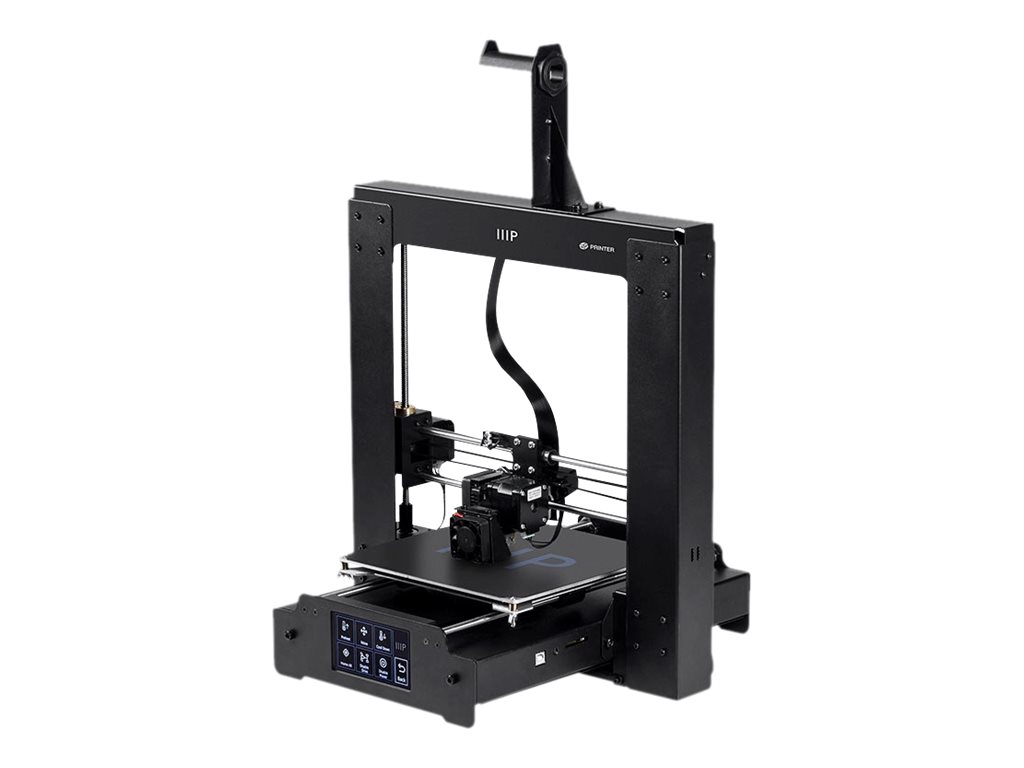 You can contact the support team via email, contact form, phone, or instant messenger.
You can contact the support team via email, contact form, phone, or instant messenger.
There are also instructional videos available on the manufacturer’s website which will solve your tiny problems, related to anything.
A year’s warranty is included with the printer because of which even if there is a single major issue that you find related to the print quality, you can return it to the manufacturer.
Parameters Influencing Buying Decision
This section will tell you very shortly by summing up the factors listed below, whether or not, you should buy this printer.
3D Printer Cost: In most places, this printer is available in the price range of $300 to $500. Although there are times when the price also drops below $300. Suggesting that this printer is meant for you if you do not have any exposure to 3D printing and are looking to it as one of the career options.
3D Print Quality: If you are looking for a printer that will surprise you by not providing any layer visibility, Monoprice is not that.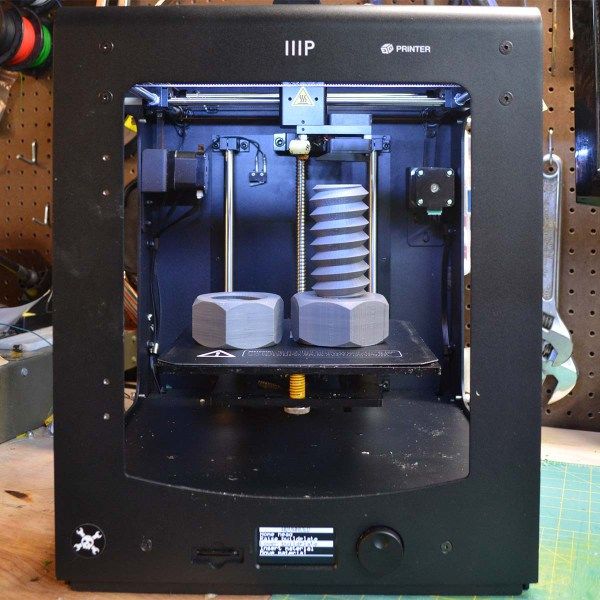 Its print quality is pretty much average.
Its print quality is pretty much average.
3D Print Speed: Looking at the list of printers that fall in the range of Maker Select V2, you’d come across the same print speed. So, 100mm per second is the industry standard.
3D Printer Capability: Capable of printing with various materials is where this printer would stand out compared to its competitors.
3D Printer Practicality: While using the printer, you might have some difficulties that you wouldn’t expect. But then, that kind of goes without saying for other printers as well.
3D User Expectations: The online reviews of this printer suggests its users be satisfied and also a little less complaining. Which makes us say, Maker Select V2 holds its user expectations well.
The Verdict
The printer doesn’t promise to be the top quality producing printer in its price range. It does have its limitations, despite that, it produces good prints.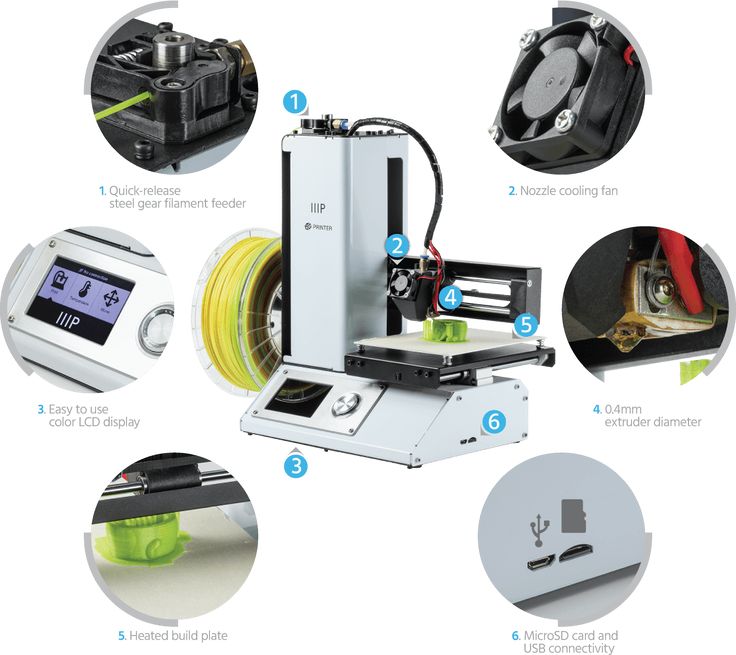
The top models in the price range which Monoprice Maker Select V2 falls cost $2000 more than it does. Bearing this fact in mind, if you purchase Monoprice Maker Select V2, you have taken a wise decision.
Overall, this is a low-cost printer, which is a good option for enthusiasts experimenting with 3D printing technology.
Overview of the budget 3D printer Monoprice Select Mini
3DPrintStory Reviews Overview of the budget 3D printer Monoprice Select Mini
Prices for desktop 3D printers continue to fall. There were times when a $600 3D printer was a delight and a desire to order it as soon as possible, but technology does not stand still, and developers and manufacturers are looking for new options to lower the price even lower. This review is dedicated to one of the budget 3D printers costing about $200 - Monoprice Select Mini. nine0005
This review is dedicated to one of the budget 3D printers costing about $200 - Monoprice Select Mini. nine0005
It is worth noting that this inexpensive model breaks established traditions and did not start with Kickstarter, unlike others like M3D Micro, Tiko, OLO / ONO and Trinus, which attracted the attention of consumers and investors thanks to crowdfunding platforms (by the way, this is really an effective development strategy for small startups, but there is often a mismatch between expectations and the final product).
Monoprice is different. This is an American company that did not particularly bother with the development and production of its own 3D printer, but simply imported the Malyan M200 from China, hung its logo on it and put an attractive price of $199. What if you got a defective 3D printer? No problem, send it back and they will replace it for you.
A reasonable question arises: can such a cheap 3D printer compete with Ultimakers or Printrbots? And is it even worth comparing? We will try to answer these and other questions in the review below.
Features Monoprice Select Mini
- Available;
- Robust design;
- Easy to use;
- Predictable 3D printing at low speed; nine0018
- Works with any slicing software and standard 3D printing materials;
- Amenable to improvements and upgrades;
- I think we already mentioned the price?
Disadvantages Monoprice Select Mini
- Difficult to calibrate;
- Prints poorly at high speeds;
- Print table not protected;
- Faulty power supply;
- WiFi module not active;
- Unstable nozzle temperature;
- Strange quirks...
Short Verdict
The Monoprice Select Mini is a great 3D printer for the price. There is a heated table, easy to operate if you do not use high speeds, stable 3D printing quality.
Naturally, there are disadvantages. During operation, the temperature of the nozzle may change, and at high speeds, 3D printing errors occur.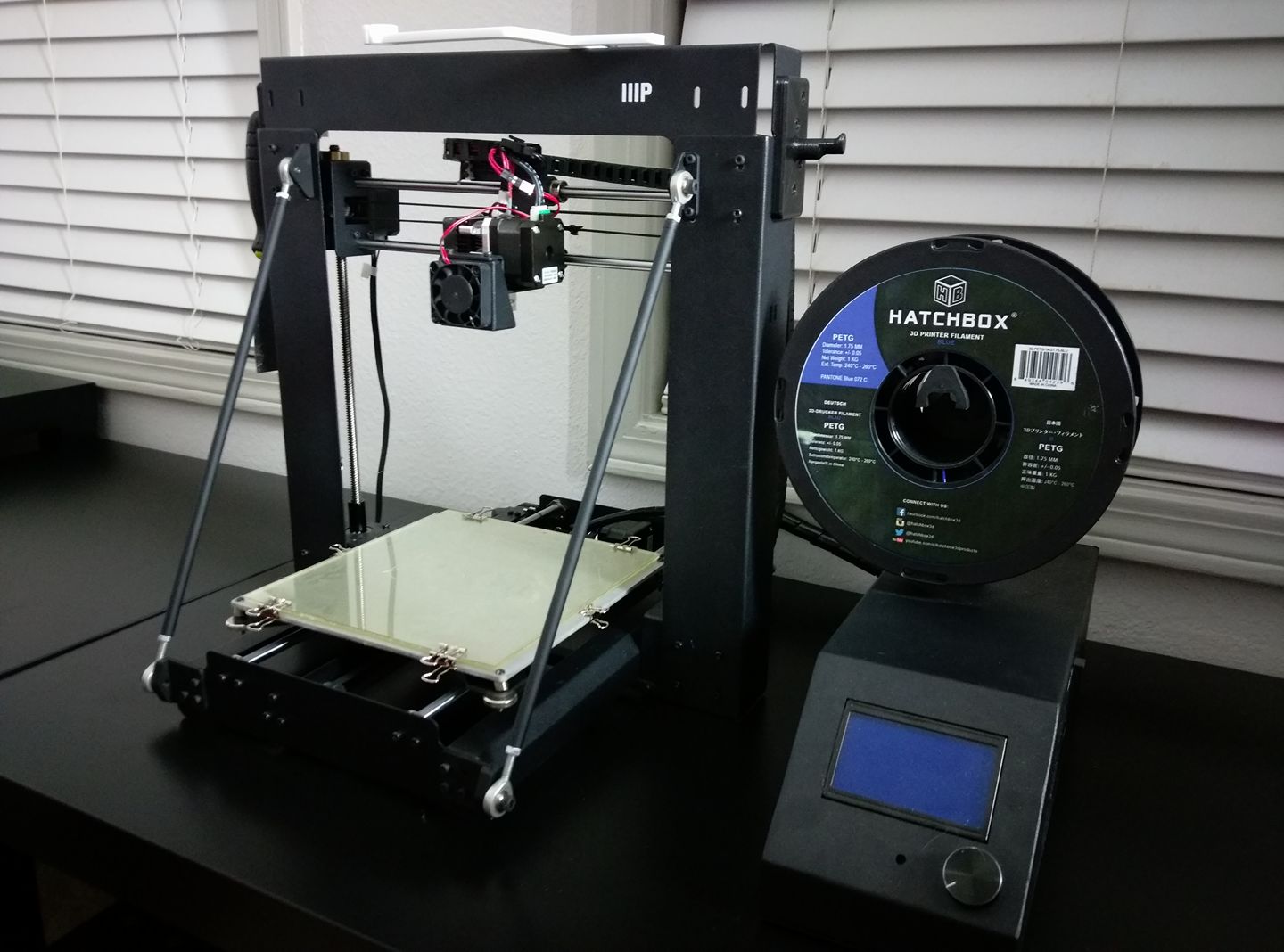 The calibration process takes a lot of time and the first time you have to tinker. Well, the most interesting thing is that the power supply burned out after 12 hours. But the latter, incorrect, can be attributed to an accidental marriage. nine0005
The calibration process takes a lot of time and the first time you have to tinker. Well, the most interesting thing is that the power supply burned out after 12 hours. But the latter, incorrect, can be attributed to an accidental marriage. nine0005
Despite all the shortcomings, the Monoprice Select Mini is a wonderful little 3D printer with many great features. In general, it performs in accordance with the information in the technical specifications, and the quality of the 3D printing even exceeded our expectations.
If you are not afraid to take it apart / put it back together, then you can do a few upgrades. The first thing to do is to replace the hotend and update the firmware to activate the WiFi module ( be careful! These upgrades have not been tested as part of this review and may damage your 3D printer! ). You can install the glass on the print table. Even with these upgrades, the price will still remain acceptable.
Would you recommend the Monoprice Select Mini as your first 3D printer? Yes, definitely.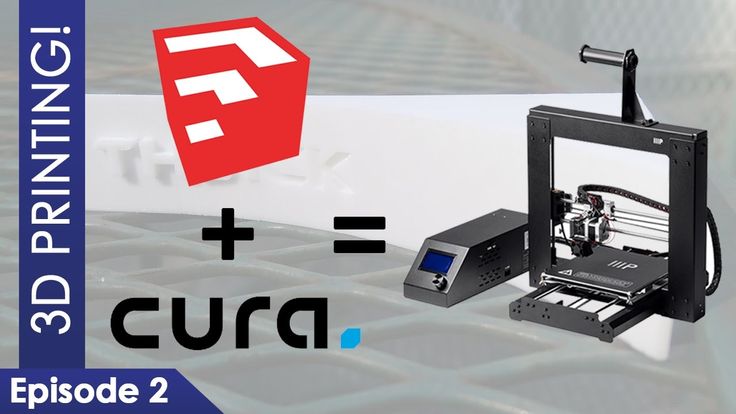
Specifications and features Monoprice Select Mini
Monoprice Select Mini workspace 120 x 120 x 120 mm. The maximum resolution of 3D printing is 100 microns. Heated table. The 3D printing speed is 55 mm/s. nine0005
You can upload your 3D model via micro SD card or USB. The manual states that compatible slicing programs are Cura, Repetier-Host, ReplicatorG, and Simplify3D. This means that the Monoprice Select Mini recognizes the standard G-code, and this 3D printer is not tied to any particular software. Cura was used during testing for this review.
Monoprice Select Mini doesn't limit your media usage. You can print with any standard 1.75 filament using PLA or ABS thermoplastics. In our case, PLA plastic from ColorFabb was used. nine0005
These two points - the freedom to choose software and filament - are very important in this price range, because manufacturers such as M3D Micro and XYZprinting, which are Monoprice's main competitors in this niche, tend to use proprietary software and their own materials for 3D printing .
Unpacking and installation of the Monoprice Select Mini
Installation of the Monoprice Select Mini is quite simple. You can start typing within 20 minutes.
Inside the box you will find a 3D printer, a power supply, an imbus wrench for calibrating the table, a plastic spatula to scrape off the rest of the material from the table after printing, a 256 MB micro SD card and a micro USB cable.
One piece of paper contains a basic instruction and a link to a website where you can download the full version.
You will also find a rectangular steel sheet, the purpose of which is not clear at first. It turns out that this is a coil holder that is attached to the side of the main unit. nine0005
It is important to note that the Monoprice Select Mini kit does not include media test samples. So stock up on filament with a diameter of 1.75 mm.
You can use the wheel to adjust. The menu is well structured and easy to understand. You can start the calibration process, preheat the extruder and feed the filament.
Calibration can be somewhat difficult. In theory, it should be carried out even before shipment, in production, and you should have a piece of paper between the nozzle and the printing table. If it doesn’t work, then hex keys will come in handy here. It will be necessary to try and tighten the screws at the corners of the table so that the sheet still passes. nine0005
At this stage, the first important shortcoming of this model becomes clear. The printing table is made of aluminum and does not have a special protective film or coating on it. So stock up on blue 3D printing tape or install glass right away. Otherwise, the table will wear out very quickly and you will have to change it.
Well, one more bug that got out in our particular case. The power supply burned out after 12 hours of use. Foaming it was not difficult, but it was very unpleasant. You can probably throw it off for marriage, but in any case, be prepared for a similar turn of events. nine0005
Design and build quality of the Monoprice Select Mini
Very pleased with the build quality of the Monoprice Select Mini. The construction is strong, reliable, with a steel sheet metal case that hides all the electronics. So don't worry about shipping damage.
The construction is strong, reliable, with a steel sheet metal case that hides all the electronics. So don't worry about shipping damage.
This 3D printer uses deposition modeling technology. The classical Cartesian coordinate system is used. The design is similar to Printrbot Simple. One cooler is used to cool the nozzle. It is likely that problems may arise during 3D printing with unusual materials. nine0005
The extruder has a diameter of 0.4 mm and can be heated up to 230°C. We have not been able to test how easy it is to change, but in the long run this is an important factor as the nozzle will still need to be changed over time.
Monoprice Select Mini Print Quality
Pre-loaded models will already be on the micro SD card. They are supposed to be optimized for 3D printing on the Monoprice Select Mini. So before uploading our own models, we printed test ones. nine0005
The cat was printed first. The resolution was 200 microns. Everything went well until the last layers. The upper part of the paw and ears could not be printed even once. There were 3 attempts in total.
The upper part of the paw and ears could not be printed even once. There were 3 attempts in total.
G-code analysis in Simlify3D showed that the table accelerated up to 55 mm/s during the printing of the last layers. That is why the error was repeated. Quite a strange decision of the company - to provide a test model, which a priori will be printed with errors...
The second model that we printed is a test elephant. The resolution was also 200 microns and 10% infill. There were no problems! The result is excellent and you can see it in the photo below. nine0005
Next we moved on to our own models. We used Cura for slicing. This article reveals the excellent Cura settings for 3D printing on the Monoprice Select Mini and we used them.
We printed a classic 3DBenchy and Graphica model: a MEGA Ghost with 200 micron resolution and 10% infill, a V29 whistle with 200 micron resolution and 100% infill, and another 3DBenchy model with 100 micron resolution and 10% infill. nine0005
nine0005
The simple 200 micron models worked well. There are no special problems with small protrusions and holes, although there are sagging. The layers are laid evenly along the X and Y axes.
The V29 whistle sounds as loud as intended, which means the partitions were printed correctly. The Graphica Mega Ghost with its long tongue also printed correctly. The hinge glided smoothly. The
3DBenchy at 100 microns worked well too. When you look at the photo, don't forget that this is a $19 3D printer.9.
We have noticed that most errors in 3D printing occur when the spool of filament clings or there is not enough adhesive coating on the printing table. This cannot be attributed to the shortcomings of the Monoprice Select Mini itself, since this is a global problem for all FFF printers.
During operation, the print table may block access to the control wheel. This point is implemented in the design is not very ergonomic.
Another disadvantage is that the nozzle temperature has an error in the region of 5°C. For example, when the 3D printing temperature is set to 215°C, it jumps between 213°C and 217°C on the control panel. nine0005
For example, when the 3D printing temperature is set to 215°C, it jumps between 213°C and 217°C on the control panel. nine0005
This does not particularly affect printing with PLA plastics, but may have a negative effect during 3D printing with materials that are more sensitive to temperature changes.
Finally, we printed a Low Poly Moai bust. We scaled the model by 50% and printed with 100 micron settings and 30% infill. It turned out well on the whole, the only small marriage is the influx of material on the chin. By the way, we observed the same effect when printing 3DBenchy with resolution settings of 100 microns. nine0005
Life hacks and upgrades Monoprice Select Mini
A few words about upgrading the Monoprice Select Mini 3D printer. There are no official upgrades! But here are a few options that you can try to implement on your own.
In our opinion, it is necessary to deal with the temperature of the extruder, make it more stable. For example, you can implement a PID temperature controller.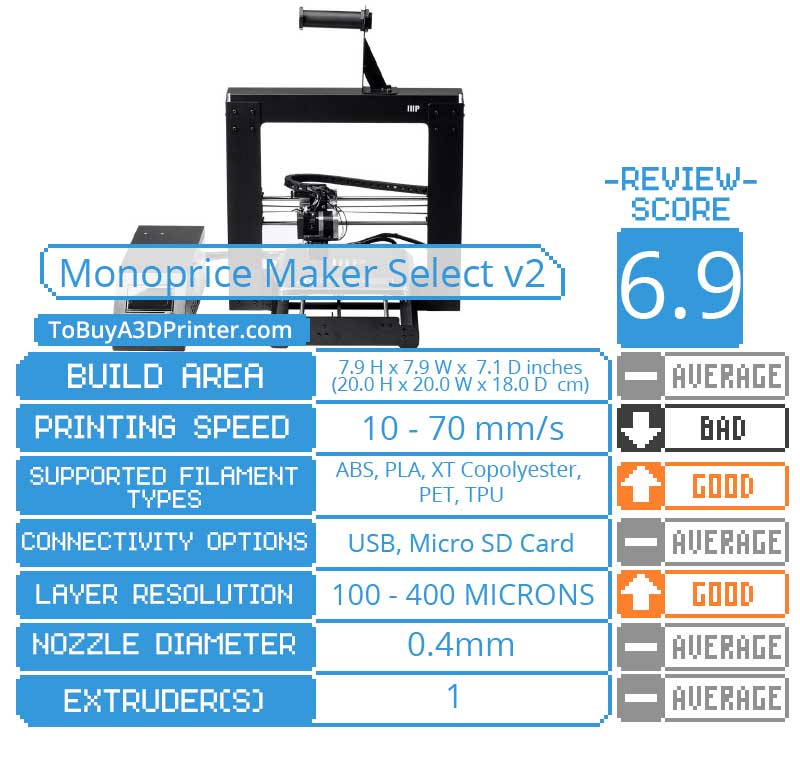
You can activate the WiFi connection by downloading the original Malyan M200 firmware. nine0059 But be careful! This option has not been tested and there is a possibility that you may damage your 3D printer!
Monoprice Select Mini Summary
After testing the Monoprice Select Mini, this is one of the best 3D printers you can buy for $200.
But it's important to realize that the print quality can't be compared to the Original Prusa i3 MK2 or LulzBot Mini. Not to mention the more expensive models.
If you're looking for a small business 3D printer or just high-quality 3D without bugs, then the Monoprice Select Mini is not for you. In addition to the print quality, you will obviously not be satisfied with periodic bugs and a small workspace. nine0005
But if you are just starting to explore the world of 3D printing, then this is a great choice and a good alternative to the Chinese Anet A8 3D printer.
The Monoprice Select Mini has some drawbacks, but it's still a great option for learning and just having fun.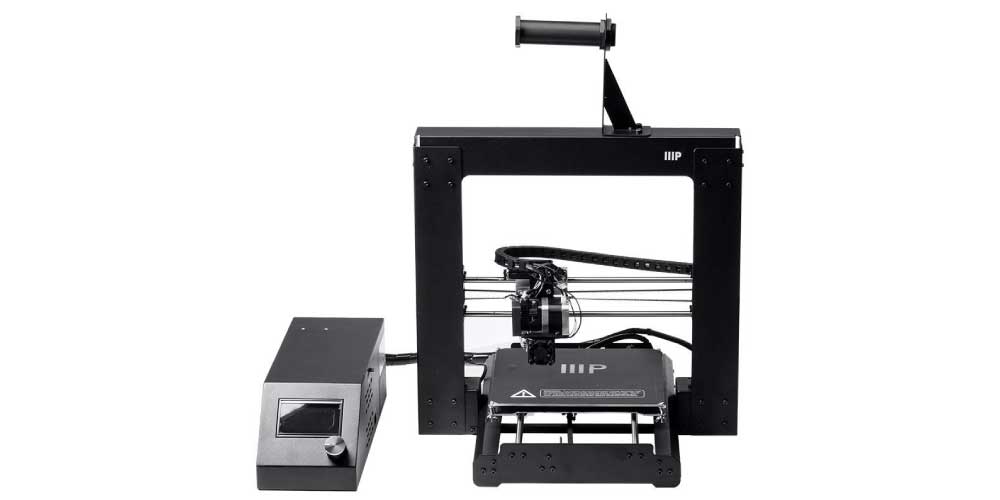 It's easy to use and print quality rivals more expensive models.
It's easy to use and print quality rivals more expensive models.
Wanhao i3 V2 | 3D printer at an affordable price in Ukraine
UAH 12,490
Construction area - 200 x 200 x 180 mm
Simple and functional 3D printing equipment based on the famous Prusa i3 3D printer. Ideal for beginners in 3D printing and home use.
When buying a 3D printer, we provide training on how to work with the device without fail! We guarantee technical support during operation and highly qualified service.
Available
Product quantity Wanhao i3 V2 3D printer nine0005
Categories: 3D printers, Buy 3D printer
- Description
- Details
- Reviews (0)
Description
Wanhao i3 V2: Features
The Wanhao i3 V2 3D printer is a development from a well-known Chinese brand based on the popular Prusa i3 3D printer. This device is distinguished by its reliability and functionality - it can work with almost all materials whose melting point does not exceed 240 ˚С. The metal structure of Wanhao i3 V2 is simple and reliable, ensuring stable operation and long life of the printer. nine0005
This device is distinguished by its reliability and functionality - it can work with almost all materials whose melting point does not exceed 240 ˚С. The metal structure of Wanhao i3 V2 is simple and reliable, ensuring stable operation and long life of the printer. nine0005
It's very easy to start 3D printing with the equipment - Wanhao i3 V2 does not require pre-assembly and requires minimal knowledge and experience with 3D printers. It is noteworthy that this device, despite its simplicity, is equipped with a heated platform, and the extruder has a built-in fan. These features make it possible to obtain high-quality products from various 3D plastics.
Specifications
| Print Technology | FDM (Fused Deposition Modeling) |
| Construction area | 200x200x180 mm |
| Number of extruders | 1 |
| Layer height | 100-500 microns |
| XY positioning accuracy | 0. |


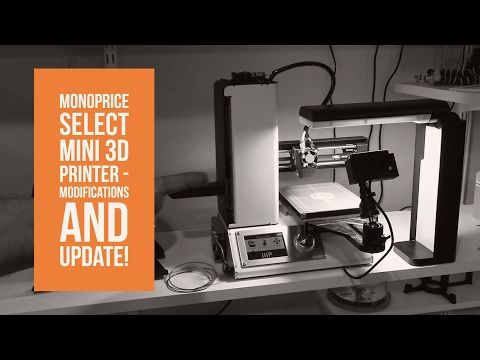 75 mm 0.07 in
75 mm 0.07 in

